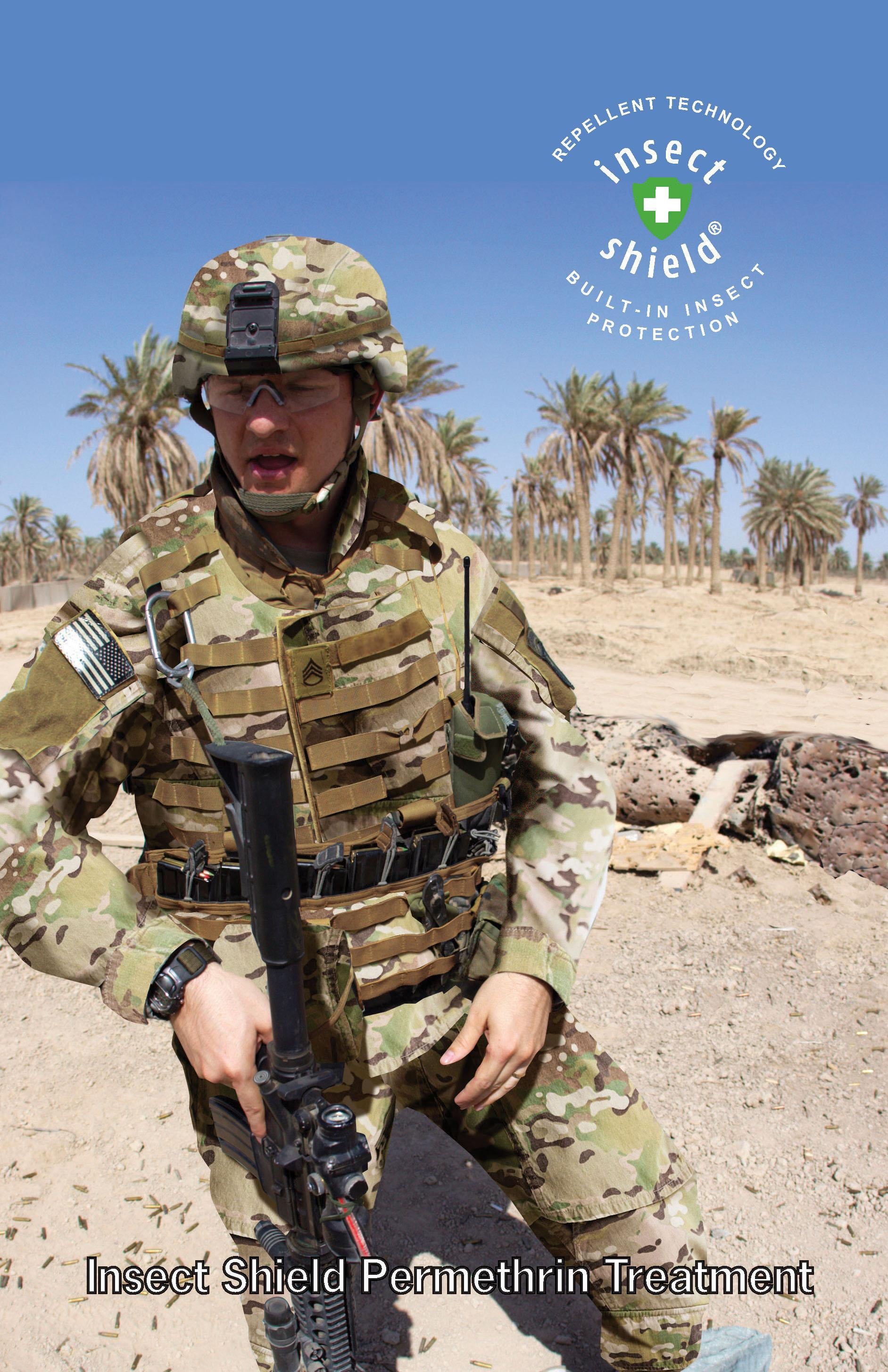It's the little things that can get you.
The military has known this for years, providing troops with many uniforms treated with insect repellent designed to ward off ticks, chiggers, fleas, ants, spiders and more.
The repellent is usually a permethrin-based formula that binds to clothing fibers for long-lasting protection. Other popular repellents, such as those with a DEET formulation, protect against biting arthropods when applied to skin or clothing, but don't last through washing and require frequent reapplication.
Insect Shield, a company started in 2001, had its genesis in 1996 when company founder Richard Lane responded to a request to find a way to make permethrin repellent adhere to military uniforms over multiple washings.
Insect Shield's Janine Robertson explained that ensuing testing resulted in researchers perfecting the formula and developing the procedures and equipment needed to make it work.
In 2002, all cadet uniforms at the U.S. Military Academy at West Point, New York, were treated with Insect Shield. Lyme disease cases there were rising annually, but after Insect Shield-treated uniforms were introduced, cases dropped to zero, Robertson said.
U.S. Environmental Protection Agency registration followed in 2003, making Insect Shield the first bug-repellant apparel and gear to be registered by the EPA. Insect Shield application to other military uniforms soon followed.
Insect Shield apparel is EPA-registered to last through 70 launderings — the expected lifetime of a garment.

Insect Shield, incorporated in 2001, had its genesis in 1996 when company founder Richard Lane responded to a request to find a way to make permethrin repellent adhere to military uniforms over multiple washings.
Photo Credit: Manufacturer photo
Next, the brand began developing its own line of clothing designed for everyday outdoor use in the consumer market. The technology also is used in some clothing and accessories affiliated with other brands such as L.L. Bean, Buff and others.
Apparel products are tested for their effectiveness in repelling a wide range of bugs, including mosquitoes, ticks, flies, chiggers, ants and midges (sometimes called no-see-ums). These insects include many species that carry diseases such as malaria, West Nile virus, dengue fever and Lyme.
Permethrin has been an EPA-registered product since 1977, commonly used in lice shampoos for children, flea dips for dogs and various other products. Some over-the-counter aerosol sprays likewise have permethrin as an active ingredient. These spray-based applications can endure several washings, but users should closely follow label instructions to ensure safe application and never apply it directly to human skin.
Instructions usually call for spraying the clothing and then letting it dry completely before wearing.
Robertson said that beyond military and consumer clothing, Insect Shield has partnered with international relief organizations such as Medical Teams International and World Vision to deliver Insect Shield Protection Blankets to impoverished, malaria-risk areas such as Malawi, Mali, Niger, Rwanda, Uganda, Zambia, Cambodia, Philippines, Bolivia, Costa Rica, Haiti and Nicaragua.
For more, go to insectshield.com.
Visiting cdc.gov and searching for "permethrin" will yield many articles about this repellent and its applications.





